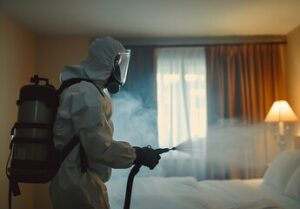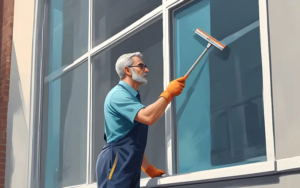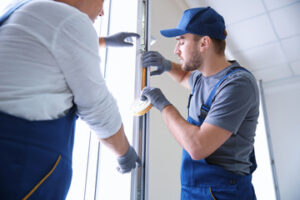Physical fitness is important to promote overall health. A comprehensive fitness routine includes aerobic, strength and flexibility exercises.

Aim for a balanced diet that includes healthy fats from avocado, fatty fish, lean meat and low-fat dairy products. Replenish electrolytes through water, sports drinks and foods like leafy green vegetables, fruit and nuts. Click Here for more information.
Fitness goals are important because they give individuals something to strive for and help keep them on track. They can also be a great motivational tool, especially when shared with others or posted publicly.
However, many people run into barriers that can impede their goal achievement, including lack of time and difficulty sticking with consistent routines. Luckily, there are ways to overcome these obstacles and achieve your desired health and wellness results.
Using the SMART method, which stands for specific, measurable, attainable, realistic, and time-bound, can help set individuals up for success when it comes to meeting their fitness goals. Keeping a fitness journal, setting short-term goals, and measuring progress are just a few of the many strategies that can be utilized to create successful workout habits.
Fitness goals must be specific in order to provide clear direction and a sense of purpose, which helps ignite motivation. Individuals should identify what aspects of fitness hold genuine importance for them, whether it’s a desire to feel more energized or to be a better role model for their children. Once they establish this “why,” it can serve as a source of inspiration and fuel their determination even when faced with challenges.
It’s also important to consider the physical limitations of individuals when creating fitness goals. Setting a goal that is too challenging can lead to frustration and discouragement, so it’s important to be as realistic as possible. For example, if someone is new to exercise, they may not be able to achieve a 300-pound bench press in the short term, but they could work up to it over the course of several months.
Lastly, fitness goals should be measurable in order to assess and track progress. Having an objective way to measure success is crucial for accountability and can help maintain consistency. For instance, a person might set a goal of losing 5 pounds in one month. By tracking their progress, they can determine if the goal was achieved and celebrate their success. However, if they did not meet their goal, they can use the information to reassess their plan and make necessary adjustments.
Counseling
When it comes to fitness and nutrition, counseling is an essential component. It enables individuals to gain deeper insights into their thoughts and behaviors, which can be used to improve personal wellbeing. It also helps them define clear, actionable goals based on their aspirations and challenges.
Professional counselors are committed to providing ethical and culturally inclusive service that benefits and protects all clients. They are skilled at creating a warm and empathetic environment, even over the phone, where you can express yourself freely. They will listen to your concerns and questions, offer insights, and work with you to develop strategies that address your challenges and promote well-being.
Counselors are trained to identify and assist people who are struggling with a variety of life issues, such as emotional difficulties, substance abuse, anxiety, depression, relationship problems, and job/career difficulties. They can also help you adjust to major changes in your life, such as divorce or the loss of a loved one. They encourage you to talk in detail about your issues so that they can evaluate and address them minutely. This enables them to reach a satisfactory outcome for you. They also help you set realistic and achievable goals that are attainable over time. In addition, they encourage you to practice positive coping skills and enhance your mental health. They may refer you to other professionals or organizations if necessary.
Technology
In the fitness industry, technology has played a major role in helping people stay motivated. For instance, fitness trackers allow users to monitor their workout performance, including heart rate, calories burned and even blood pressure. In addition, they are also capable of integrating with apps that provide real-time data about their progress. These technology tools help individuals feel more confident about their fitness goals and encourage them to continue with their fitness journey.
Another significant factor in encouraging people to exercise is the ability to socialize through the use of social media or group fitness classes. Moreover, the popularity of virtual and augmented reality fitness equipment allows workouts to be more fun and exciting. These fitness tech trends also encourage more participation by younger people and create a more engaging environment at gym facilities.
According to ACSM’s 2024 Fitness Trends survey, wearable technology is one of the top fitness trends this year. This includes fitness trackers, smartwatches and other wearable devices that are used to monitor health indicators such as sleep, sitting time and movement.
Other tech-based fitness tools that have proven to be effective at improving adherence and autonomy include apps that provide personalized workouts and virtual coaching. These applications have the potential to replace fitness coaches and increase motivation for many individuals. However, it is important for fitness professionals to ensure that these applications are accurate and unbiased in their delivery.
Functional fitness continues to grow as a trend, as people are increasingly interested in exercises that prepare the body for everyday activities. This is evident in the growing emphasis on resistance training and growth of calisthenic movements such as squats. In addition, apparel like Google’s Project Jacquard, which features intelligent fabrics that interact with digital devices and track motion, is demonstrating how advanced technologies can make it easier to stay active.
While technology is helping to drive fitness trends, the most important factor in achieving long-term fitness success is maintaining a strong relationship with a professional. Counseling sessions with a qualified counselor can help people set realistic goals, overcome obstacles and stick to their programs. The best counselors offer a judgement-free environment, actively listen to their clients’ concerns and tailor their guidance to suit each individual’s unique circumstances.







